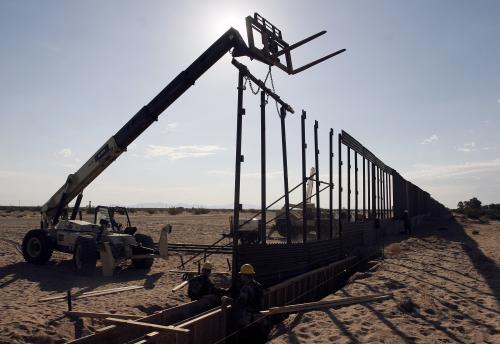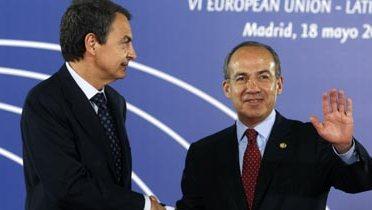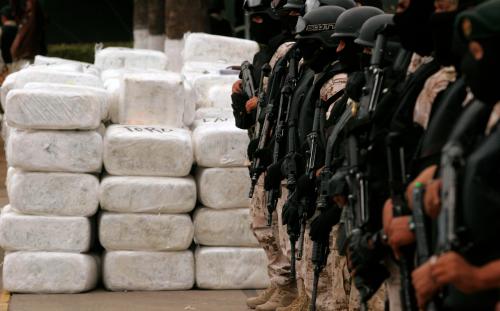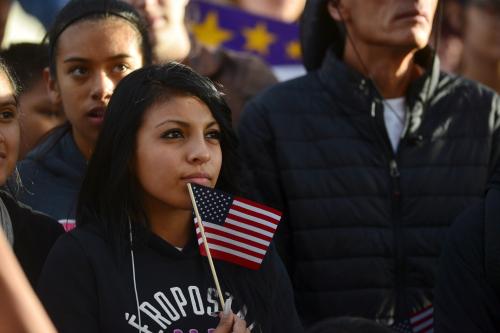In advance of the Oct. 19 presidential debate at UNLV, The Sunday and the Brookings Institution, in partnership with UNLV and Brookings Mountain West, are presenting a series of guest columns on state and national election issues. The columns will appear weekly.
In the wake of recent attacks across the globe, fears over terrorism, immigrants and illicit drugs have been used to justify costly proposals for thousands of miles of walls along our Southern border and bans on the admission to the United States of refugees fleeing the conflict in Syria, or even bans on entire religious groups. This heated political rhetoric obscures the complexity of the border reality confronted by the United States and its neighbors, all of whom benefit from growing cross-border trade and travel.
JOINING ECONOMIES AT THE HIP
Peaceful borders in the Americas are not an accident of history, but rather the product of two remarkable trends over the past three decades: sweeping democratization and the spread of economic integration agreements. Since the 1980s, Latin America’s militaries have stepped out of power, and democratic governments prevail in almost all countries in the hemisphere. This has led countries to manage borders through peaceful negotiations rather than militarization.
Peace paved the way for these democratic governments to tie their economies ever more closely together through trade and investment preferences. These efforts created customs unions like Mercosur, and trade pacts like NAFTA and CAFTA. Economic integration and democratization have led to increased freedom and shared prosperity. According to United Nations statistics, by 2013, 32.5 percent of total U.S. trade takes place with Canada, Mexico and Brazil, and over 55 percent of imported oil is sourced from other countries in the Americas.
NAFTA countries are at the forefront of these trends toward peaceful relations, deep economic integration and intensified cross-border flows. The degree of trade is unprecedented. Approximately 40 percent of everything Mexico exports to the United States contain U.S. inputs, and for Canada, 25 percent of exports to the U.S. depend on inputs from the United States.
THE WRONG KIND OF SECURITY
But these trends also have produced some public “bads,” as borders are more vulnerable to penetration by transnational crime, illicit goods and undocumented migrants. And many experts agree that the majority of illicit goods and undocumented migrants who enter the United States do so intermingled with growing legal trade at formal border crossings rather than through the empty spaces in between.
Many democratic governments in the hemisphere have not made the necessary investments in secure borders to adapt to a regional trade environment that is accelerating. Governments also made the mistake of thinking that integration would only lead to an increase in legal trade, when it was logical to expect that illicit flows would rise as well.
And even when countries like the U.S. spend more on border security, they focus too much on building fences, hiring more border patrol agents and establishing more sophisticated electronic surveillance of the empty spaces between legal crossings. A more effective strategy would acknowledge reality: illegal trade occurs at formal border crossings, many of which suffer from a lack of capacity and investment.
However, the 2016 campaign, thus far, has largely overlooked policy reality, preferring instead to focus on easy talking points, name calling and solutions that are ineffective, unachievable or — worse — both.
IMPROVING INFRASTRUCTURE AND THE IMMIGRATION SYSTEM
Rather than build more walls, we instead need to adapt our borders to a new paradigm that prizes ever closer economic integration with our neighbors. This means the U.S. and its trade partners in the Americas need to do better at finding the illicit “signal” within the growing tide of trade “noise.”
This places a premium on collaborative cross-border security. Rather than duplicate efforts by having custom facilities inspect goods twice as they cross borders, we should have our customs officials working side by side with their counterparts, trained to common standards, operating under a common roof. Efforts already are underway to expand the pre-clearance of goods produced by trusted manufacturers and transported by certified shippers. The U.S. and Mexico are pioneering jointly staffed inspection facilities at the Laredo airport in Texas, at San Jeronimo in Chihuahua and at Otay Mesa in California. Such efforts will ensure that border security resources are deployed more effectively and efficiently even as we benefit from a rising tide of trade.
But we also need to realize that improved border security infrastructure needs to be paired with immigration reform. A well-designed and humane temporary worker program would divert migrants seeking economic opportunity toward legal and documented channels, allowing U.S. Homeland Security agents to focus on those whose motives are suspect and whose behavior should be closely scrutinized.
Trade, border security and immigration are critical issues, worthy of presidential attention. Candidates have not shied away from discussing them, but thus far, ineffective ideas and shallow talking points have overshadowed thoughtful, evidence-based policy solutions. The upcoming presidential debates will be a true test of Donald Trump’s and Hillary Clinton’s intentions and seriousness on these issues. Americans should think through the options that will provide the best outcomes, not what seem like the easiest fixes.






Commentary
Rhetoric of this year’s presidential campaign is no substitute for thoughtful policy
September 6, 2016